AMD Ryzen Threadripper 1920X Review
Why you can trust Tom's Hardware
VRMark, 3DMark & AotS: Escalation
Test Notes
Intel released new microcode for its Skylake-X processors recently, which reduces performance in some titles and lowers the AVX offset by two bins. We also noticed far lower Turbo Boost activation thresholds, though that could separately be the result of MSI's newest BIOS. The changes likely come in response to some of the power and thermal issues we encountered during our extended testing. We consequently retested both Skylake-X processors with the newest microcode.
AMD's Ryzen gaming performance is also a moving target, though it continues to improve over time. Today's story reflects all processors re-tested with the latest chipset, BIOS, GPU drivers, and game patches. We continue seeking out the best performance possible, so in today's review, we dial in AMD's Game mode for our game benchmarks.
VRMark & 3DMark
We aren't big fans of using synthetic benchmarks to measure game performance, but 3DMark's DX11 and DX12 CPU tests provide useful insight into the amount of horsepower available to game engines.
Futuremark's VRMark test lets you gauge your system's suitability for use with the HTC Vive or Oculus Rift, even if you don't currently own an HMD. The Orange Room test is based on the suggested system requirements for current-generation HTC Vive and Oculus Rift HMDs. Futuremark defines a passing score as anything above 109 FPS.
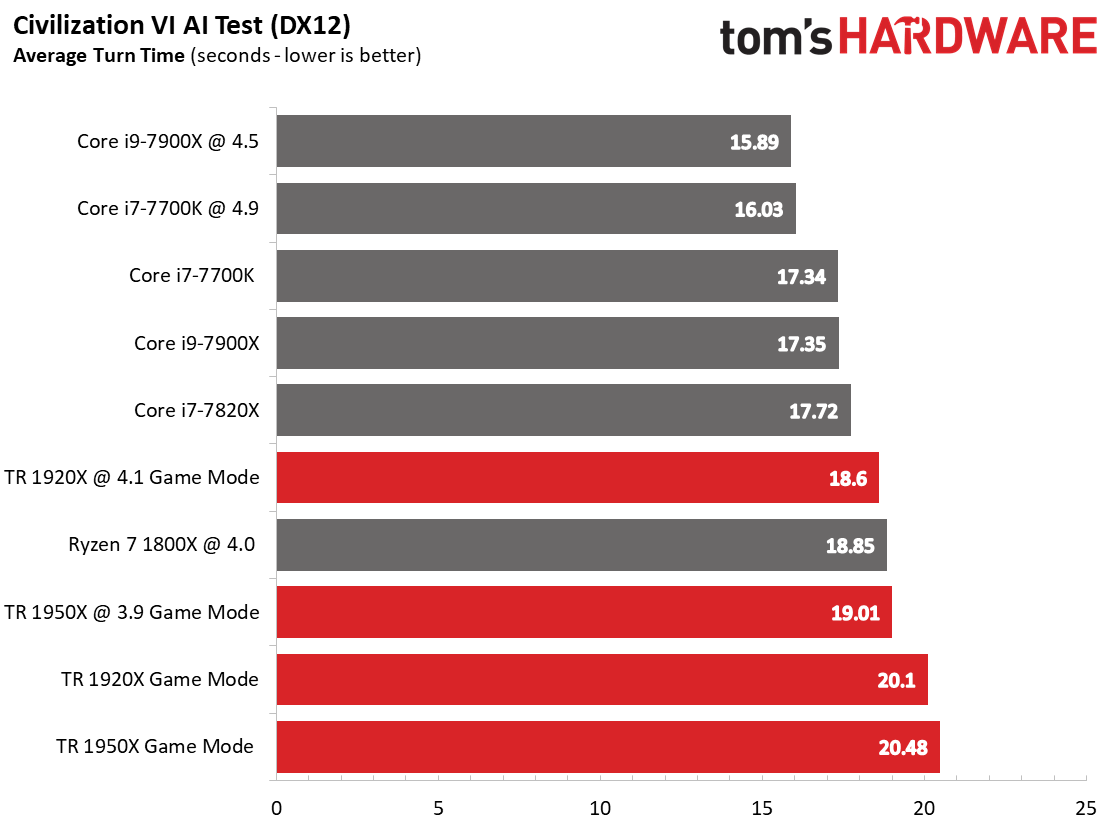
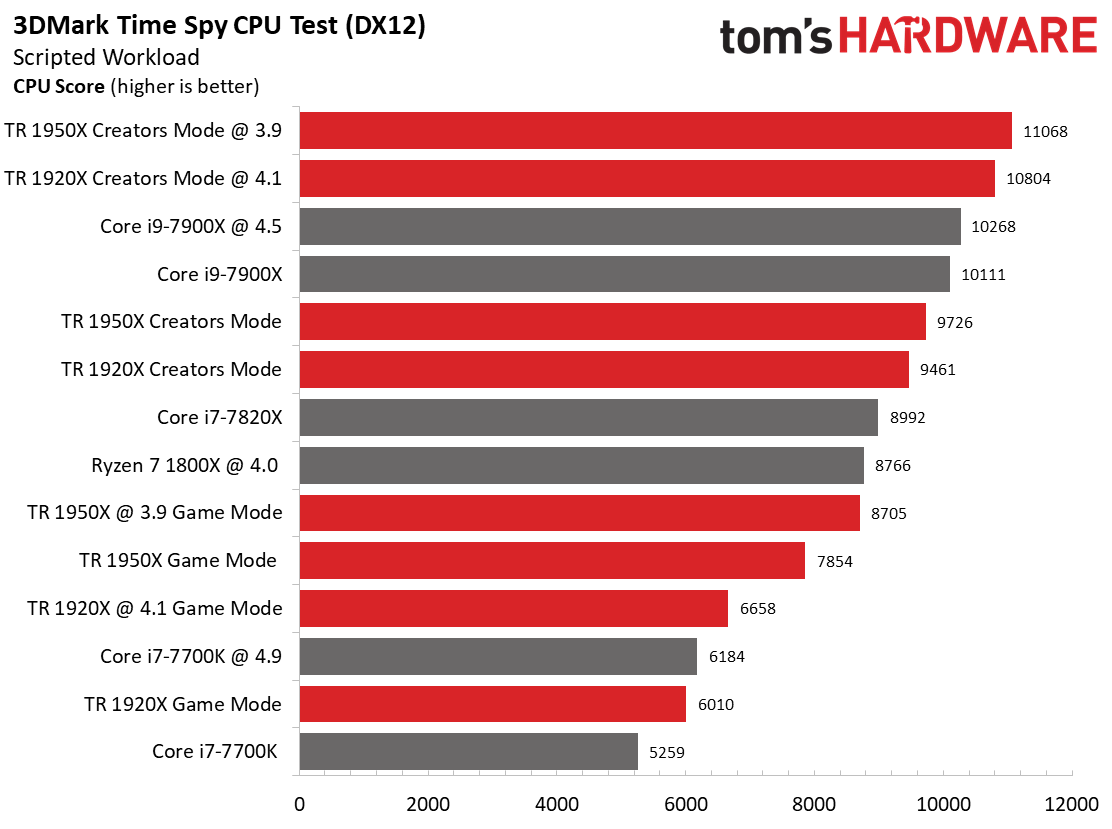
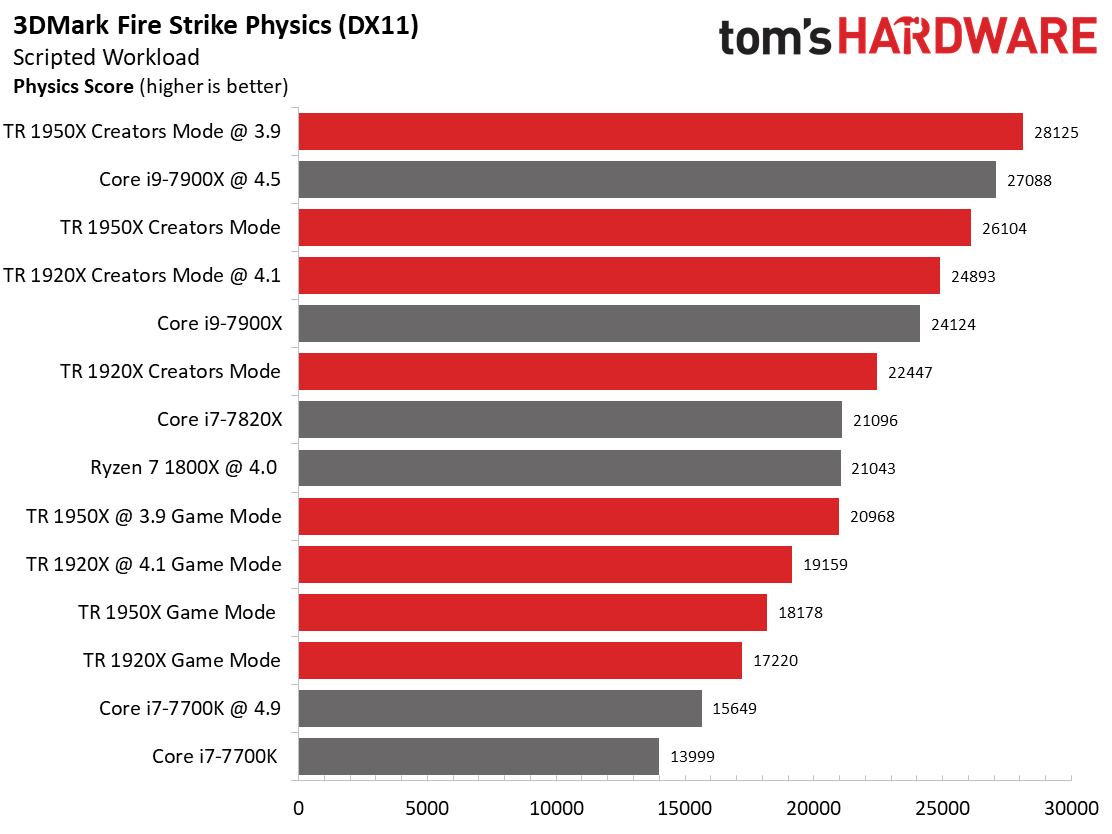
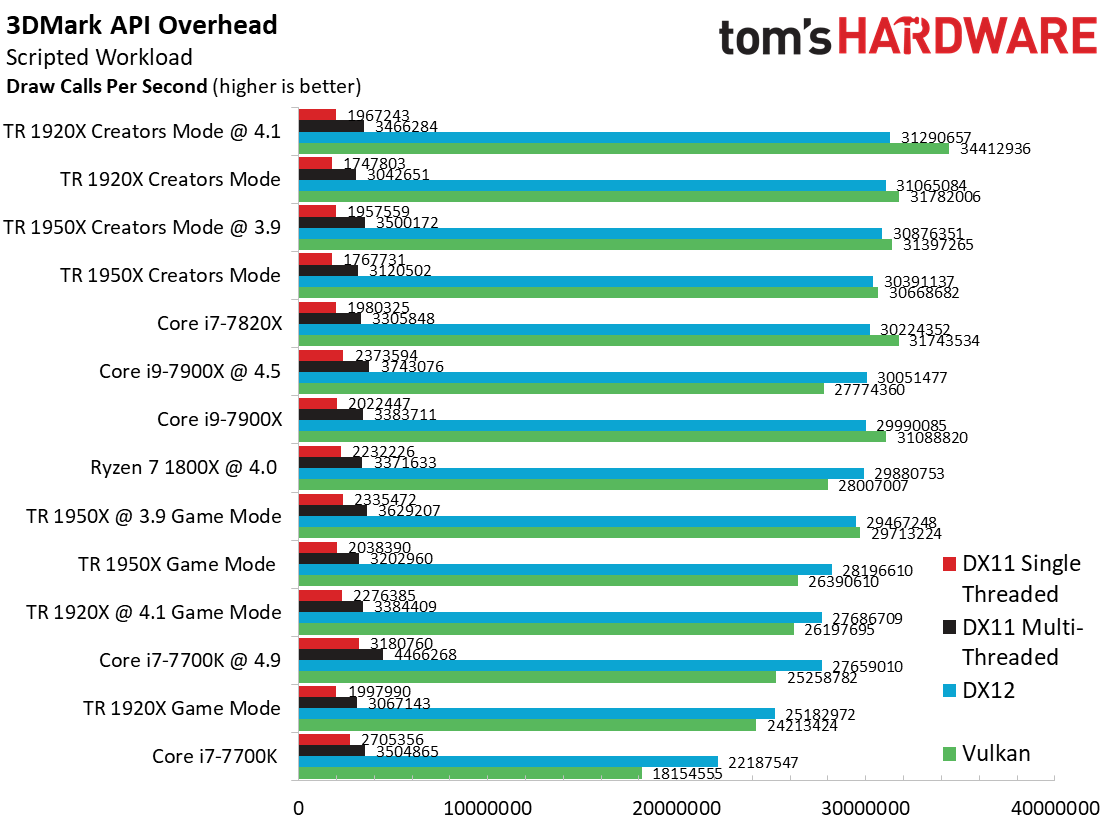
VRMark responds well to high IPC throughput and frequency, so it's not surprising to see the 1920X benefit from a clock rate advantage over the 1950X at stock settings. Extra overclocking headroom gives the 1920X a bigger boost once we start tuning.
The Intel processors lead, but it's possible that Ryzen-specific optimizations could improve Threadripper's results.
We also tested the 1920X and 1950X in Creator mode for the threaded 3DMark DX11 and DX12 tests. Big core counts propel Threadripper to the top of our charts when it's overclocked, but Game mode halves the number of available threads, causing lackluster performance. Notably, both overclocked Threadripper models in Creator mode yield the best performance.
Get Tom's Hardware's best news and in-depth reviews, straight to your inbox.
The Vulkan API responds exceedingly well to Threadripper's architecture, and the tuned 1920X delivers excellent DX11 single-threaded performance, particularly in game mode.
Ashes of the Singularity: Escalation
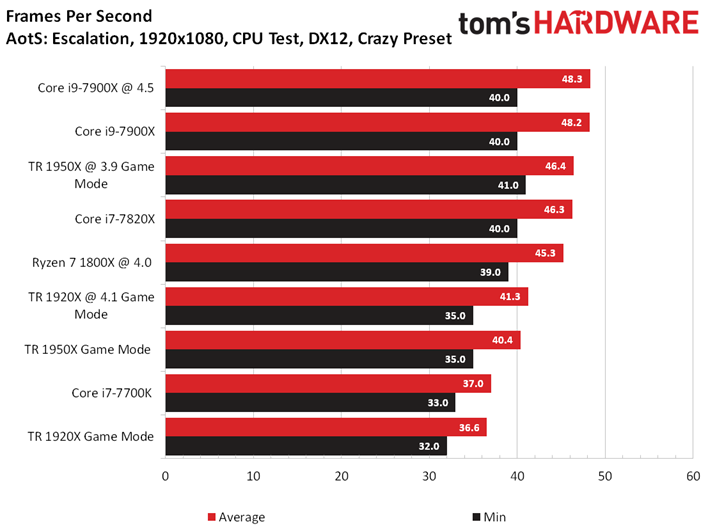
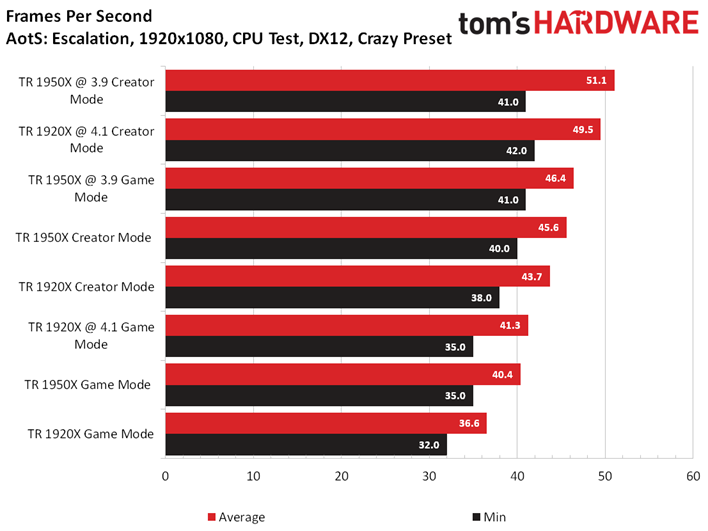
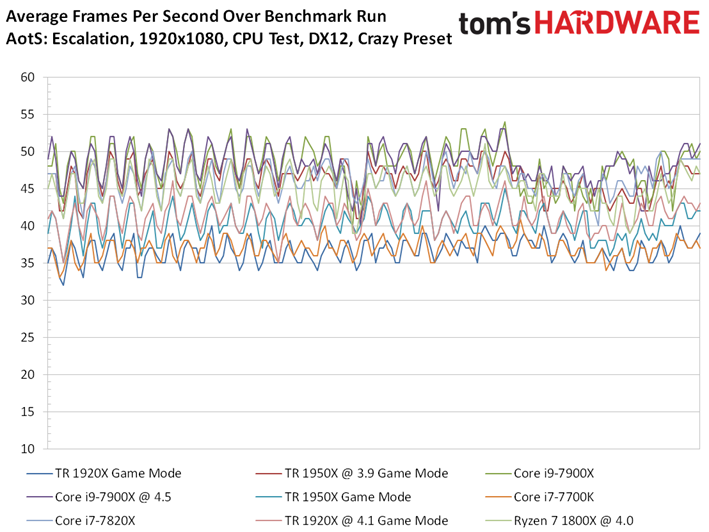
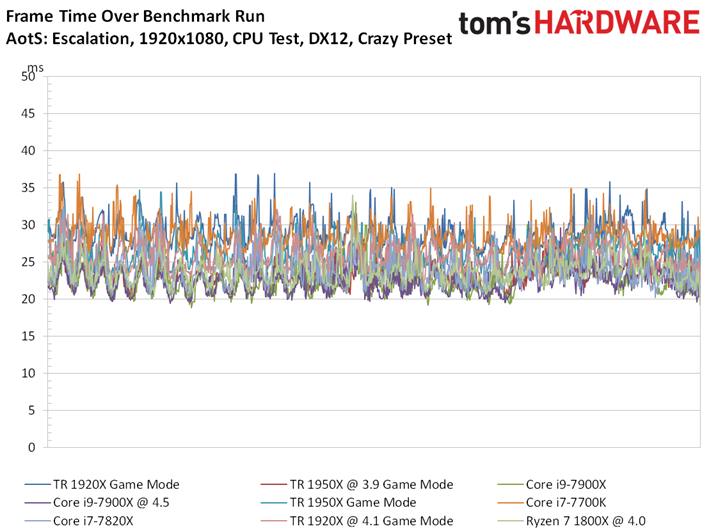
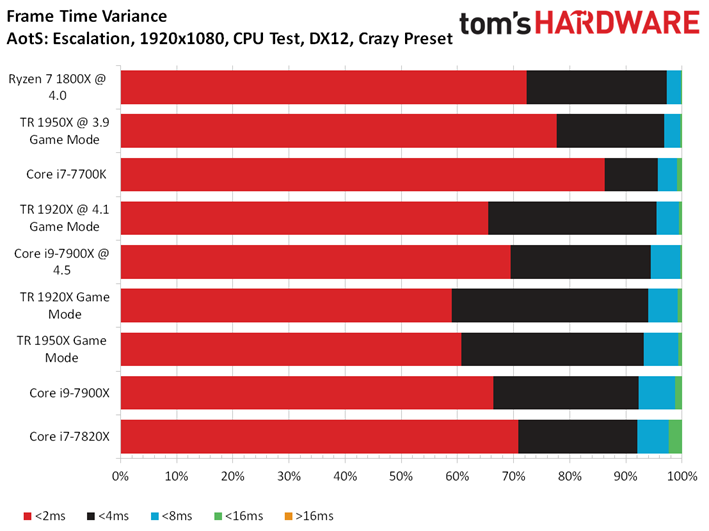
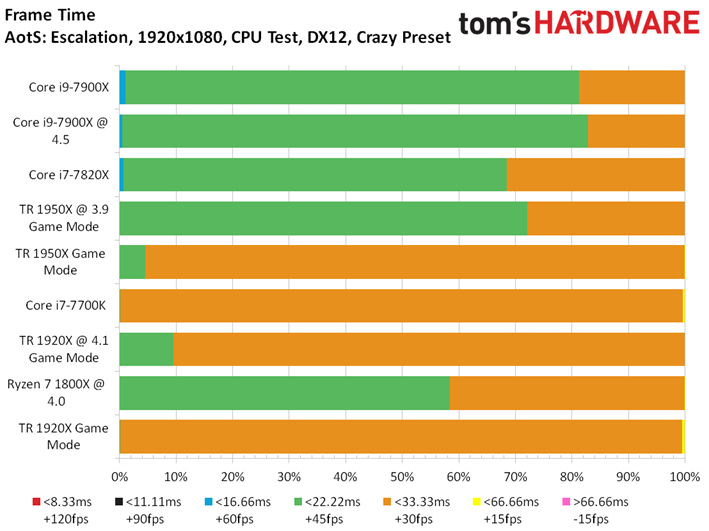
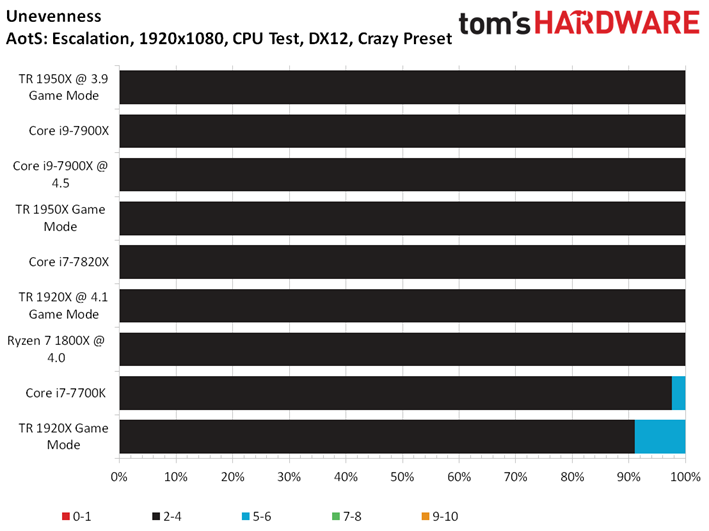
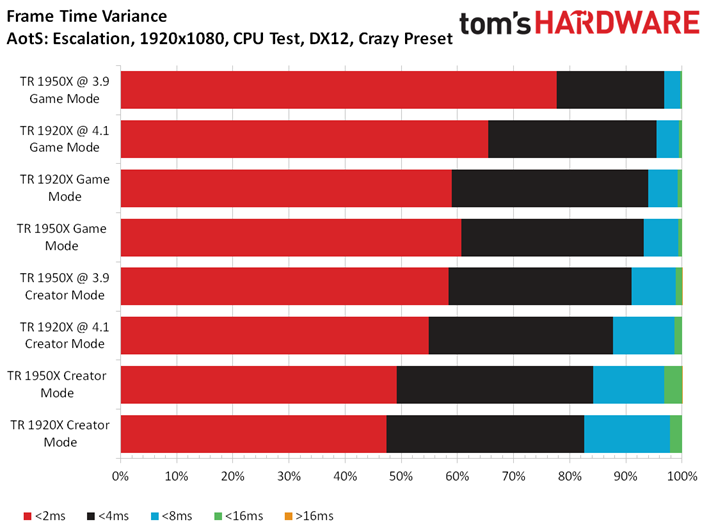
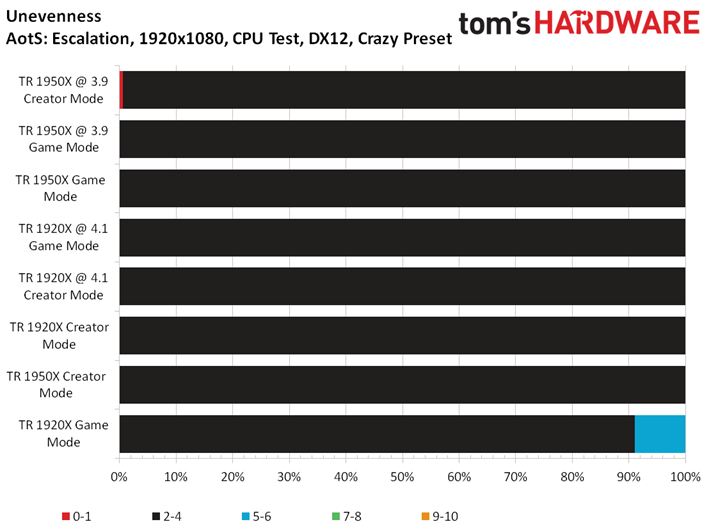
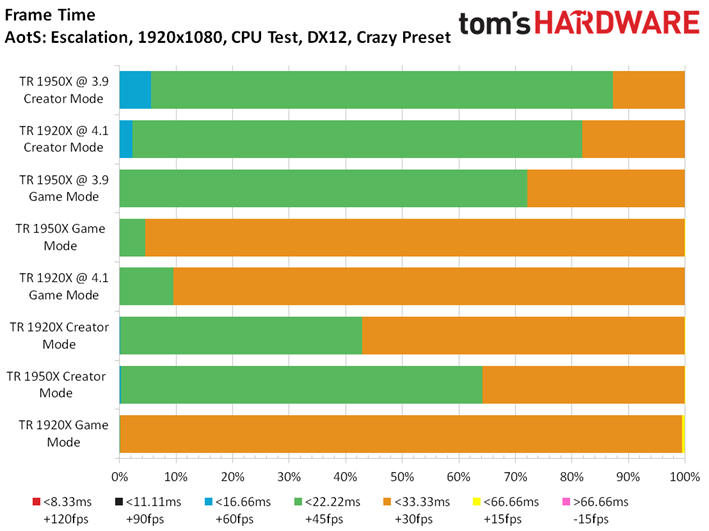
Switching the 1920X into Game mode creates a 6C/12T configuration that maximizes memory locality and eliminates die-to-die latency. But that comes at the expense of performance in parallel workloads. As such, Threadripper falls below its 8C/16T Ryzen 7 1800X counterpart in this heavily-threaded game.
We include an additional slide with test results using various settings. These numbers highlight that Game mode has a positive impact on lightly-threaded and otherwise incompatible titles, but can be a hindrance for more taxing workloads. A bit of tuning (and switching to Creator mode) pushes the Threadripper models above Intel's Core i9-7900X.
MORE: Best CPUs
MORE: Intel & AMD Processor Hierarchy
MORE: All CPUs Content
Current page: VRMark, 3DMark & AotS: Escalation
Prev Page How We Test Next Page Civilization VI, Battlefield 1 & Dawn of War III
Paul Alcorn is the Editor-in-Chief for Tom's Hardware US. He also writes news and reviews on CPUs, storage, and enterprise hardware.
-
Aldain Great review as always but on the power consumption fron given that the 1950x has six more cores and the 1920 has two more they are more power efficient than the 7900x is every regard relative to the high stock clocks of the TRReply -
derekullo "Ryzen Threadripper 1920X comes arms with 12 physical cores and SMT"Reply
...
Judging from Threadripper 1950X versus the Threadripper 1900X we can infer that a difference of 400 megahertz is worth the tdp of 16 whole threads.
I never realized HT / SMT was that efficient or is AMD holding something back with the Threadripper 1900x? -
jeremyj_83 Your sister site Anandtech did a retest of Threadripper a while back and found that their original form of game mode was more effective than the one supplied by AMD. What they had done is disable SMT and have a 16c/16t CPU instead of the 8c/16t that AMD's game mode does. http://www.anandtech.com/show/11726/retesting-amd-ryzen-threadrippers-game-mode-halving-cores-for-more-performance/16Reply -
Wisecracker Hats-off to AMD and Intel. The quantity (and quality) of processing power is simply amazing these days. Long gone are the times of taking days off (literally) for "rasterizing and rendering" of work flowsReply
...or is AMD holding something back with the Threadripper 1900x?
I think the better question is, "Where is AMD going from here?"
The first revision Socket SP3r2/TR4 mobos are simply amazing, and AMD has traditionally maintained (and improved!) their high-end stuff. I can't wait to see how they use those 4094 landings and massive bandwidth over the next few years. The next iteration of the 'Ripper already has me salivating :ouch:
I'll take 4X Summit Ridge 'glued' together, please !!
-
RomeoReject This was a great article. While there's no way in hell I'll ever be able to afford something this high-end, it's cool to see AMD trading punches once again.Reply -
ibjeepr I'm confused.Reply
"We maintained a 4.1 GHz overclock"
Per chart "Threadripper 1920X - Boost Frequency (GHz) 4.0 (4.2 XFR)"
So you couldn't get the XFR to 4.2?
If I understand correctly manually overclocking disables XFR.
So your chip was just a lotto loser at 4.1 or am I missing something?
EDIT: Oh, you mean 4.1 All core OC I bet. -
sion126 actually the view should be you cannot afford not to go this way. You save a lot of time with gear like this my two 1950X rigs are killing my workload like no tomorrow... pretty impressive...for just gaming, maybe......but then again....its a solid investment that will run a long time...Reply -
AgentLozen Replyredgarl said:Now this at 7nm...
A big die shrink like that would be helpful but I think that Ryzen suffers from other architectural limitations.
Ryzen has a clock speed ceiling of roughly 4.2Ghz. It's difficult to get it past there regardless of your cooling method.
Also, Ryzen experiences nasty latency when data is being shared over the Infinity Fabric. Highly threaded work loads are being artificially limited when passing between dies.
Lastly, the Ryzen's IPC lags behind Intel's a little bit. Coupled with the relatively low clock speed ceiling, Ryzen isn't the most ideal CPU for gaming (it holds up well in higher resolutions to be fair).
Threadripper and Ryzen only look as good as they do because Intel hasn't focused on improving their desktop chips in the last few years. Imagine if Ivy Bridge wasn't a minor upgrade. If Haswell, Broadwell, Skylake, and Kabylake weren't tiny 5% improvements. What if Skylake X wasn't a concentrated fiery inferno? Zen wouldn't be a big deal if all of Intel's latest chips were as impressive as the Core 2 Duo was back in 2006.
AMD has done an amazing job transitioning from crappy Bulldozer to Zen. They're in a position to really put the hurt on Intel but they can't lose the momentum they've built. If AMD were to address all of these problems in their next architecture update, they would really have a monster on their hands. -
redgarl Sure Billy Gates, at 1080p with an 800$ CPU and an 800$ GPU made by a competitor... sure...Reply
At 1440p and 2160p the gaming performances is the same, however your multi-threading performances are still better than the overprices Intel chips.